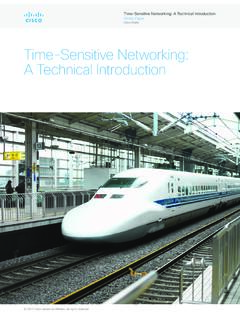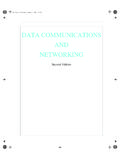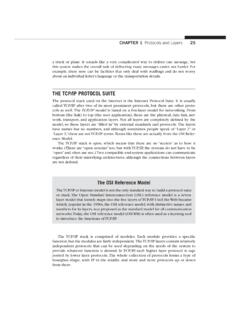Transcription of An Introduction to Polkadot
1 April 2020An Introduction to April 2020 Introduction 3 Overview 4 Heterogeneous Sharding 5 Scalability 6 Upgradeability 7 Transparent Governance 8 Cross-Chain Composability 8 Polkadot Architecture 9 Polkadot Consensus Roles 10 Polkadot Governance Roles 10 The DOT Token 11 Kusama Network 12 Substrate 13 About Web3 Foundation 14 About Parity 15 Friends of Polkadot 16 Contact 17 Polkadot empowers the individual against much more powerfulcorporate and state actors.
2 -Dr. Gavin Wood, Polkadot FounderTable of April 2020 Every day we interact with technologies controlled by a handful of large companies whose interests and incentives often conflict with our own. If we want the benefits of using their proprietary apps, we re forced to agree to terms that most of us will never read, granting these companies complete control over the data we generate through each interaction with their tools. Because that data can often paint a detailed picture of our personal lives, it s become a resource more valuable than oil. And we re giving it up for free with no choice but to trust that it won t be lost, stolen or misused. At the same time, progress in open-source and decentralized technologies like blockchain has shown that we can build systems that prioritize individual sovereignty over centralized control.
3 With these new systems, there s no need to trust any third parties not to be blockchain technology, in its current form, isn t ready to break the corporate stranglehold on the web just yet. Despite the promise and the progress made, we have yet to see significant real-world deployment of the TRUSTMORE April 20204 Polkadot is a next-generation blockchain protocol that unites an entire network of purpose-built blockchains, allowing them to operate seamlessly together at scale. Because Polkadot allows any type of data to be sent between any type of blockchain, it unlocks a wide range of real-world use cases. By bringing together the best features from multiple specialized blockchains, Polkadot paves the way for new decentralized marketplaces to emerge, offering fairer ways to access services through a variety of apps and providers.
4 While blockchains have demonstrated great promise in several fields Internet of Things (IoT), finance, governance, identity management, web decentralization, and asset-tracking to name a few design limitations in previous systems have largely hindered large-scale adoption. Polkadot s design offers several distinct advantages over existing and legacy networks, including heterogeneous sharding, scalability, upgradeability, transparent governance and cross-chain composability. THIS IS April 20205 Many chains,one networkHeterogeneous ShardingWill there eventually be one blockchain to rule them all? We don t think blockchains make different tradeoffs tosupport specific features and use cases, and as chain specialization increases, the need to transact between them will only increase over is a sharded blockchain, meaning it connects several chains together in a single network, allowing them to process transactions in parallel and exchange data between chains with security guarantees.
5 Thanks to Polkadot s unique heterogeneous sharding model, each chain in the network can be optimized for a specific use case rather than being forced to adapt to a one-size-fits-all chains and more specialization means more possibilities for April 20206 One blockchain isn t enough to support a bustling future of decentralized applications. The limited throughput and lack of runtime specialization in early blockchains made them impractical for scaling in many real-world use cases. By bridging multiple specialized chains together into one sharded network, Polkadot allows for multiple transactions to be processed in parallel. This system removes the bottlenecks that occurred on earlier networks that processed transactions will be able to scale even further in the future with a planned feature known as nested relay chains, which will increase the number of shards that can be added to the April 20207 Early computer games were shipped on printed circuit boards known as cartridges.
6 These cartridges were expensive and time-consuming to make as the code was etched onto the chips, leaving no room for days we re used to our apps, games and browsers updating frequently, even automatically. Developers fix bugs before they can cause problems, and new features are added as better solutions become all software, blockchains need upgrades in order to stay relevant. However, it s far more difficult to upgrade a blockchain than an app, game, or browser. Upgrading conventional blockchains requires forking the network, often taking months of work, and particularly contentious hard forks can break apart a community. Polkadot revolutionizes this process, enabling blockchains to upgrade themselves without the need to fork the chain.
7 These forkless upgrades are enacted through Polkadot s transparent on-chain governance this feature, Polkadot enables projects to stay agile, adapting and evolving with the pace of technology. It also significantly reduces the risk associated with contentious hard forks a severe barrier to entry for many your blockchain with forkless April 20208 Early blockchains had no formal governance procedures. Individual stakeholders were powerless to propose or veto protocol changes unless they knew the right is different. It s governed by anyone who owns DOTs, Polkadot s native currency, in a fair and transparent DOT holders are able to propose a change to the protocol or vote on existing proposals.
8 They can also help elect council members who represent passive stakeholders within Polkadot s governance poweredTransparent GovernanceEarly blockchains were like walled gardens closed off to other networks. But as the number of chains for specific use cases continues to rise, so does the need for cross-chain communication and s cross-chain composability and message passing allows shards to communicate, exchange value, and share functionality, opening the door to a new wave of to Polkadot s ability to bridge blockchains, Polkadot shards will also be able to interact with popular decentralized-finance protocols and cryptoassets on external networks like designCross-Chain April 20209 Connectingthe dotsRelay Chain The heart of Polkadot , responsible for the network s security, consensus and cross-chain interoperability.
9 ParachainsSovereign blockchains that can have their own tokens and optimize their functionality for specific use cases. To connect to the Relay Chain, parachains can pay as they go or lease a slot for continuous blockchains that allow Polkadot shards to connect to and communicate with external networks like Ethereum and unites a network of heterogeneous blockchain shards called parachains. These chains connect to and are secured by the Polkadot Relay Chain. They can also connect with external networks via bridges. Polkadot April 202010 ValidatorsSecure the Relay Chain by staking DOTs, validating proofs from collators and participating in consensus with other the Relay Chain by selecting trustworthy validators and staking shards by collecting shard transactions from users and producing proofs for Monitor the network and report bad behavior to validators.
10 Collators and any parachain full node can perform the fisherman role. Council MembersElected to represent passive stakeholders in two primary governance roles: proposing referenda and vetoing dangerous or malicious referenda. Technical CommitteeComposed of teams actively building Polkadot . Can propose emergency referenda, together with the council, for fast-tracked voting and Consensus RolesPolkadot Governance April 202011 GovernancePolkadot token holders have complete control over the protocol. All privileges, which on other platforms are exclusive to miners, will be given to the Relay Chain participants (DOT holders), including managing exceptional events such as protocol upgrades and theory incentivizes token holders to behave in honest ways.






